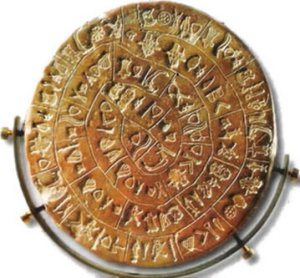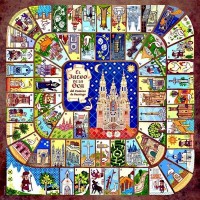Blog
Maps of the Camino de Santiago: Game of the Goose
Some pilgrims sometimes ask for the etymology of the people who cross over Galicia. It is still a mystery to many why there is a "Muxía" or "Camariñas", from where it evolved and what he meant. The origin of the names of ancient peoples is at your disposal on the ground: detailed maps before, when GPS was not even a witchcraft idea, people named to distinguish them from other sites. The languages were maps for those who knew the codes. The secret maps became more sophisticated over the millennial and any route known for the heroic years of the Middle Ages official maps available and those a bit "cryptic". Among the Camino maps of Santiago it stands, especially the popular Game of the Goose a continental version for Snake and Ladders.
Who has not had good times of rainy afternoons traveling on board Game of the Goose? But the origin of this ancient pastime may be related to the pilgrimage route.
The game structure is in ancient archaeological remains: excavations taken in nineteenth century in the palace of Crete taught us Phaistos disc, which has a circular structure: is a clay disc diameter of 16 cm thick 2.1. Both sides of the disc contain spirals are divided into 30 and 31 boxes in which images are recorded.

This game is found in medieval adapt by well-known protagonists: the Order of the Templars. The famous and extinct order played Nautilus as hobby, this game was much like the Goose table. The popularity of this game was not due to his excitement, in fact, the rules of the order prohibiting dice games or chess. The reason for this board is in the images that decorated: each print of the 63 boxes was a crypto map Camino de Santiago.
Until his fall from grace, persecution and annihilation, the Templar order were a guardian of the way to Jerusalem. The Templars also took care of the safety of pilgrims to Santiago in the Middle Ages because many of its sections were located not in Christian dominions.
But was it really a game? It is conceivable that was used as a guide to the Camino de Santiago. This reference manual encryption took posters and markers placed in the master builders castles, fortifications and churches along the Camino. Although references that led recorded the Game of the Goose are not preserved, we do understand that the illustrations make a hieroglyphic known throughout the Order, and an understanding that allowed all the knights of the Order, regardless of the language of each.
It was important that the code pass unnoticed and that a Templar did not have to go or board carrying along the road, so it is likely that the symbols were collected on the board marks on buildings and infrastructure left by the Master Builders. The board would serve to teach the initiate: simple symbols would not arouse suspicion among secular and at the time, they would be easy to remember.
What was the secret contents of the Goose? Attribute a particular meaning would speculate. In addition, it is likely that the validity of the transmitted information has expired. Still, some experts associated with locations Camino boxes, such as the bridge Puente La Reina.
The search for hidden Templar symbols in the Game of the Goose is still open.
¡Buen Camino!
Photo from gibralfaro.uma.es and minimundos.wordpress.com
